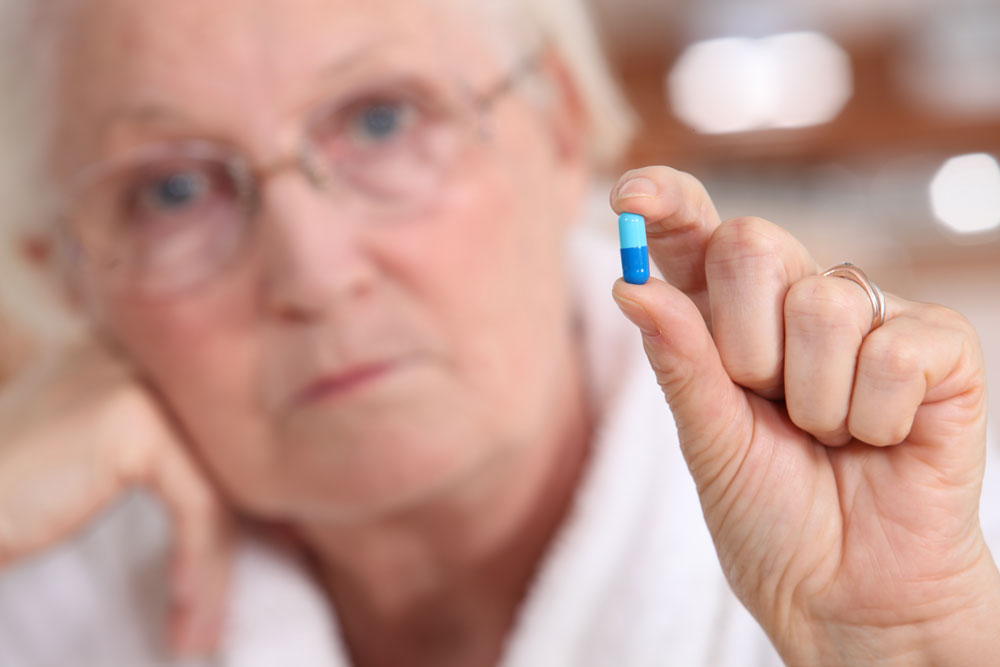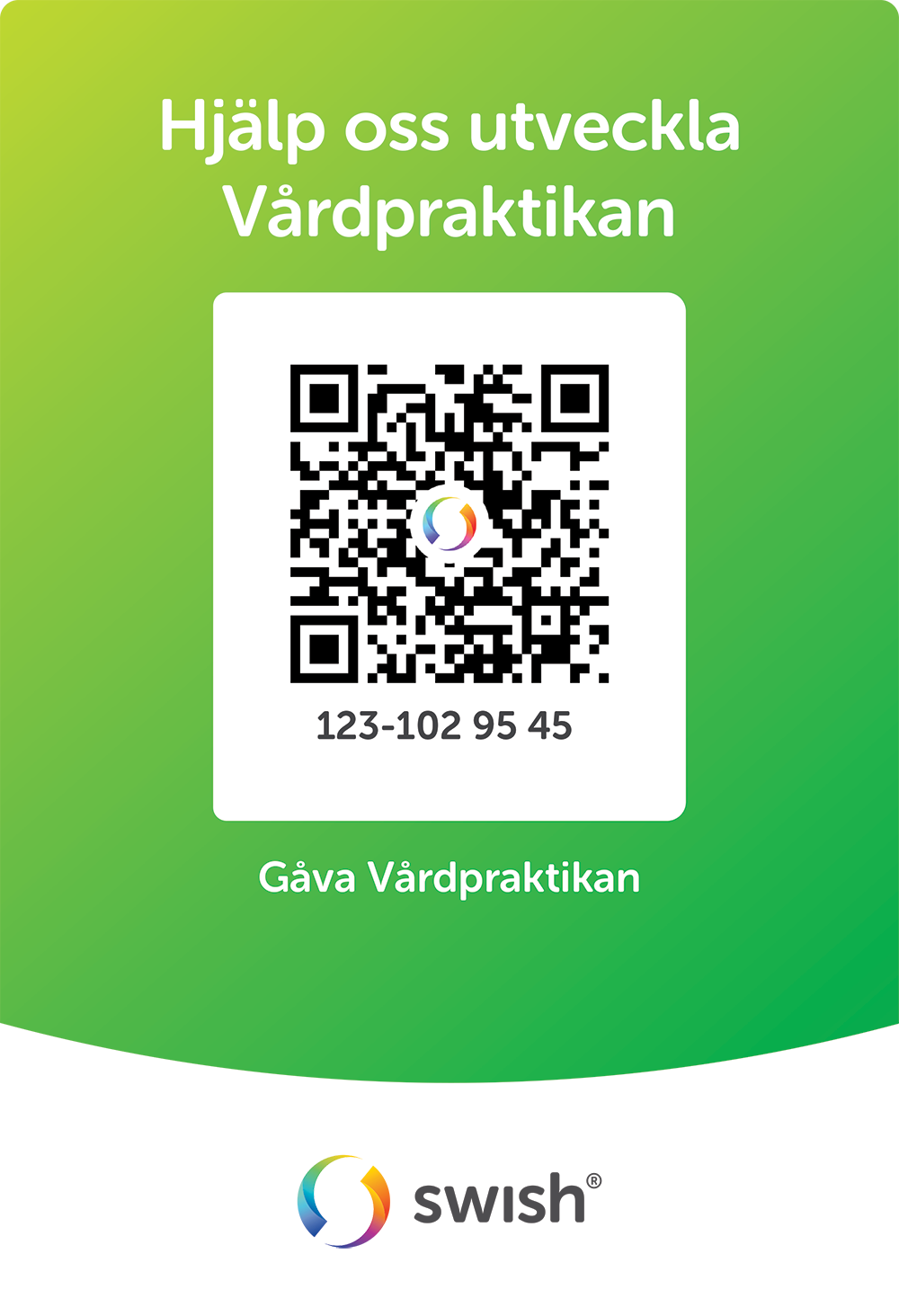Medicine
This article is translated with AI and is based on Swedish conditions. Hopefully, it can inspire interested parties from other countries.
Good routines for medication reduce the risks of injuries. There are medicines that the elderly should avoid as they are unsuitable. Medication reviews improve care. Lack of routines in medication management risks leading to suffering, medical injuries, and in the worst case, premature death. There are regulatory requirements but also good support for working to reduce the risk of medication side effects. Handling narcotics requires special routines.
 Foto: Mostphotos
Foto: MostphotosOlder people often have complex medical needs and are more sensitive to side effects of drugs. Therefore, creating and following good routines in medication management is important. It is about both patient safety and care quality for the residents.
Nurses were criticized for not being active enough in the fall prevention work and for not informing relatives sufficiently. The resident had been given antipsychotic medication to help the staff with hygiene. The man fell twice with hospital stay in between after the initiation and died shortly thereafter. Despite the fall injuries, no fall prevention health plan was established.
The risks of medication management
Most elderly people have one or more drugs that interact with each other. Medicines that are effective often have side effects. Therefore, there are risks with all drug use. Residents of special accommodations sometimes have more than ten drugs. Anyone who has ten or more drugs is considered to have a high risk of suffering from negative effects. Likewise, anyone who takes three or more psychopharmaceuticals. Confusion or incorrect dosing can lead to side effects, deterioration of health status or even the need for hospitalization.
Medication management occurs in several different steps, from prescribing drugs by doctors to dosing and administration by healthcare staff. Errors at any stage of this process can have serious consequences for the health of older people.
Side effects
Many drugs lead to an increased risk of falls and side effects in the form of dizziness, nausea, dry mouth and reduced appetite. Calculations show that around 10-30% of all hospital admissions are due to drug side effects. A number of national initiatives have been made, resulting in a reduced use of, among other things, psychopharmaceuticals.
Drug side effects can be difficult to distinguish from disease conditions/symptoms and should therefore be kept in mind when symptoms may be drug-induced. Common causes of hospitalization caused by drugs can be dizziness, falls, fainting, reduced consciousness, nausea, constipation, diarrhea, vomiting, bleeding, and heart failure. One question is whether there have recently been changes in medications that may be the cause of the patient seeking care.
Preparation for medication review
Medication reviews should be conducted according to the regulation. Confusion can have many causes, including drugs. A person in their 80s has a halved kidney function compared to a middle-aged person. The distribution of fat and water in the body also changes, the amount of fat increases and the amount of water decreases. This leads to a reduced ability to break down drugs and in the worst case drug poisoning. The brain's sensitivity to drugs increases with age. Central acting drugs such as sleeping pills and calming medication should therefore be avoided. Side effects that younger people perceive as mild can be serious for an older person.
The patient-responsible nurse can prepare for the medication review by assessing the patient with the Phase 20 instrument. For people with cognitive impairment, Phase Proxy is used. By sitting down with the resident and a nurse assistant who knows the resident well, suspected side effects can be identified. This provides good support for the doctor who will later conduct the medication review.
Regions have made great efforts to reduce the prescription of inappropriate drugs to the elderly. However, there are still reasons to be vigilant about possible side effects. There is a list of drugs that are preferred in the treatment of the elderly. There are also a number of drugs where use in the elderly is discouraged. The reason may be, for example, that increased fall risk is a common side effect.
In some operations, help is offered by a pharmacist who is an expert on drugs. Together with the doctor, the resident, relatives and the team around the resident, an assessment is made of how the drugs work for the individual.
Pharmacies have access to the individual's medication list and can provide personal medication advice. Electronic Expert Support (EES) is a system that pharmacies use to detect if drugs interact with each other, are unsuitable for the elderly, or if the dose is too high.
Safe medication management
Mishandled medications can have serious consequences for the elderly, resulting in medical injuries. Safe routines and good systems to reduce risks make a big difference. The routines must be known and followed by everyone so that medication management is safe.
There are many risks with medication management and in many operations many deviations are reported. Medications that are forgotten, the individual receives a double dose or is given the nighttime medication in the morning. The most serious deviations occur when employees give medication to the wrong person. This can have very fatal consequences. Medication management should therefore be structured so that errors are avoided.
Data-based signing systems such as Appva and Alfa KL are used in healthcare. All medications are then entered and signed directly on a tablet or mobile phone by employees in connection with their administration. The system sounds an alarm if the medication has not been given at the right time. The employee notifies the nurse via the system when something needs to be refilled.
Digital signature lists provide increased security when it comes to remembering to give medication at the right time. It is usually safest if all medications are available inside the individual's apartment. The risk of mixing people up is then reduced. If signature lists on paper are used, the risk of medications being forgotten increases. These should always be stored where the medications are stored.
Medication management in special residences is usually done as a health and medical care effort. It happens that the individual is responsible for their own medications. This is called self-care. In self-care, the individual can, for example, ask employees to help get the medications without it being a delegated health and medical care effort. Self-care requires that the elderly person is clear and organized. Residents can have self-care for a single medication if, for example, the resident can manage their inhaler themselves but receives help with medication management in general.
Many times, the tablets come pre-divided in sachets. If the individual has few medications or frequently receives changed prescriptions, a dose set may be a better alternative.
Not all medications can be distributed in advance. This may be because the substance is light-sensitive or for other reasons should not be exposed. Liquid medications are usually distributed at the current time or for a few days at a time. Eye and ear drops are given directly from the package. The same goes for ointments and plasters.
The actual distribution is surrounded by checks to ensure that it is the right person, that the medication has not already been given, that it is the right time, how it should be given and that the number of tablets matches the prescription. It is not always easy in the stress that can prevail in connection with breakfast at a nursing home. In such cases, it is important that the employee follows the applicable instructions.
Tablets are washed down with plenty of liquid. Otherwise, there is a risk of corrosion in the mouth and throat. Some medications should not be taken in connection with meals. There may be other regulations regarding the intake of individual medications. The nurse may decide that certain medications should be crushed before they are given. Decisions may only be made by a nurse who has checked in FASS how the medications can be given before making a decision.
Handling of medications is covered by hygiene requirements, as with food. Employees may never touch the medications with their hands. They are most appropriately given via a medicine cup or with a spoon. After that, signing must take place immediately after the medication is given. The fewer employees who share medications at each sharing occasion, the less risk of errors.
Some units appoint a staff member as the main person responsible for each sharing occasion. They then double-check that everyone has received their medications. The person with the main responsibility signs that they are responsible on a special list.
Certain medications are given when needed. The need must be assessed by a nurse. The nurse must document why the medication was given and evaluate the effect of the intake. All medications that are administered must be evaluated to ensure that they do not do more harm than good.
Many medicines are addictive and classified as narcotics. These are surrounded by special safety regulations to avoid abuse.
Sometimes, advanced equipment is required to administer medicines. This can include, for example, medicine pumps or drip counters. Insulin is often given with special insulin pens to ensure the correct dosage. Oxygen is a medicine that, like others, must be prescribed by a doctor. Often, a pulmonary specialist is involved in the prescription to ensure that it is given for the correct indications. There are a number of aids when it comes to medicines for inhalation. All of these are considered medical devices and are surrounded by special safety regulations.
Quality review of medication management
There is a statutory requirement that medication management must be quality reviewed by an external quality reviewer at least once a year. The quality reviewer is often a pharmacist, but can also be, for example, a medically responsible nurse.
The quality review examines the security of medication management, both in terms of the risk of loss and burglary. It also examines whether there are secure routines for who has access to the medication storage. It is desirable that it is possible to track who has been in the medication storage, especially in a situation where there is a shortage of medication for some reason.
In order for work in the medication room to be safe, there must be order and order. There must be access to water for hand hygiene and cleaning of dosers. The room, bench surfaces and other things are cleaned at regular intervals and there must be enough space to make it easy to find the right medication in a stressful situation. Temperatures in both refrigerators and rooms are checked regularly to ensure that the shelf life of the stored medicines is not impaired.
One area that is particularly vulnerable is the handling of narcotics-classified medicines. These are prone to theft and employees who handle narcotics-classified medicines run the risk of becoming addicted. Narcotics records are kept and check counts are carried out regularly. To ensure the count, two nurses should always count these medicines together. The operation should also be able to follow up on which medicines have been ordered and delivered and that these have been entered in the narcotics record. During the check, medicines are usually checked on a random basis.
Other medicines are also checked, in the case of medicines with a short shelf life and some form of reasonableness assessment regarding the amount of medicines stored in the medicines supply. If there is an emergency bag, it should be checked. Since it is possible to get deliveries within a few weeks, there is no reason to have stocks for many months ahead. The expiry date should be noted on ointments, eye drops and other medicines with a short shelf life. If there are medicines in the apartment, a review of how the medicines are handled there can be included, including that the prescription documents and signature lists are correct.
Medicines are hazardous waste and the handling of discarded medicines is surrounded by rules to ensure that it is safe and minimizes environmental impact. There may be reasons to review how the delegation of tasks works in the operation and that only delegated personnel handle medicines. Likewise, that there is clear responsibility when it comes to who requisitions medicines and who checks them. Prescribing medicines according to general directives is also reviewed.
The person who reviews then writes a protocol. It is then possible to follow up to ensure that what is noted has been addressed.
Storage of medicines
A well-functioning medicines room is a good basis for safe medicines handling. Most often, medicines that are used are the property of the individual. This means that healthcare personnel are not allowed to borrow medicines between residents. Many units have a basic supply of medicines that can be used at short notice. These medicines are paid for by the Region. These can be antibiotics or painkillers, for example. These medicines then belong to the unit.
Medicines have common properties with food. Some medicines are stored in a refrigerator. When it comes to refrigerated storage, special checks are required every week to ensure that the refrigerator maintains the correct temperature. Just as with food, it must be possible to trace that there is an unbroken cold chain for storing the medicine. The check of the cooling temperature in the refrigerator is signed. Other medicines can have a shortened shelf life if they are stored in warm areas. The temperature in the medicine room is checked regularly so that it does not exceed 250C.
Some medicines have a short shelf life in opened packaging. Eye and ear drops and insulin often have a shelf life of one month. When such packaging is opened, the date must be noted on the packaging so that the shelf life of the medicines is not exceeded. Packages must be marked with the social security number and name. There must be routines for checking the expiry date so that no one receives medicines that are too old.
Medicines can be toxic if handled incorrectly and are then subject to special work environment regulations. There may be reasons to inform about risks, display signs and so on. Medicines must in some cases be marked based on the directives of the emergency services. This applies in particular to gases. Medicines that have been dispensed from pharmacies may not be used by another person and must be discarded for safety reasons.
Narcotics-classified medicines
Many medicines inherently involve a higher level of risk and may require special controls. Such medicines include Waran and Insulin. They require special attention and delegation of handling of these medicines takes place in a specific order and to a limited group of employees.
Drug loss
There are medicines that are prone to theft. There may therefore be reasons to consider how burglar-proof the medicine room is. There are environmental aspects to how much should be in the medicine store of both private and shared medicines.
Therefore, the business must have safe routines for drug handling. With safe routines, loss is detected early and the risk of theft is reduced. Inadequate routines for controlling drugs can attract theft and abuse.
Many nursing homes have had drug loss at some point. It may be pure negligence, but thefts of narcotics-classified medicines do occur. Investigations sometimes show that there is more under the surface than what is visible at first sight. Those who abuse narcotics often find clever ways to try to hide their abuse.
When this happens, a deviation is written. In connection with the investigation of the deviation, it is important to understand the background. If the procedures are inadequate, there are other ways to work to reduce the risk of the incident happening again. The starting point must always be to first look at the operations' procedures.
In order to be able to check all medications that come to the unit and to follow the medications in the narcotics journal until they are used or discarded, there must be traceability. Regular checks of narcotics so that any deficiencies are quickly detected.
It is interesting what disappears, where the medications are when they disappear. It is often possible to find a time frame in which the medications must have disappeared. With digital signing, losses are often detected earlier.
It is the opportunity that makes the thief and reducing the amount of narcotics available is a way to reduce the risk of theft. If large quantities are available, the temptation increases while the possibilities of detection decrease. If there are three hundred tablets in the storeroom, the nurse's ability to check the stock is impaired.
Drug losses are not that common. When they do occur, they cause a lot of problems in the operation. It is easy to suspect colleagues on loose grounds and for rumors to arise. There is therefore every reason in the world to investigate thoroughly and quickly. With stricter routines, such as daily check-ups, it can be possible to call in when drugs have disappeared if the incidents are repeated.
One starting point is that drugs should always be kept locked up. They are prone to theft, so the space should have a high level of theft security. There are locks with card readers and drug dispensers that further reduce the risk of theft and increase traceability.
All drugs that come to the unit should be recorded in a drug consumption journal. It may be a good idea to list the drugs that are classified as drugs so that all drugs that are prone to theft are entered in such a journal. Withdrawals are documented with the patient's date of birth, the amount withdrawn, the time and a signature of the person who made the withdrawal. A check count is carried out at each withdrawal. This way, you know that the amount was correct at the time of withdrawal.
Anyone who discovers a shortage immediately reports a deviation to the operations manager or the pharmaceutical manager according to local routine. There should be a routine for check counting in the local instructions for drug handling. Check counting is adapted to the needs of the operation and can even take place daily.
In a nursing home, there may be reasons to have special routines for the individual. This may mean that only a few tablets are left in the resident's locker and that these are checked daily. Sachets with narcotic drugs can also disappear. There may then be reasons to check that the sachets have not been tampered with.
People who abuse drugs are easily drawn into crime. It is both about supporting their own addiction and that other people may have a hold on the person who abuses drugs.
People with substance abuse problems in healthcare therefore pose an increased risk of healthcare-related harm but also of theft. The creativity when it comes to getting hold of drugs for those who are drug addicted is limitless. It is therefore important to keep track of discarded medicines. There may also be other weak points in the operation.
Thefts in the facility must be reported to the police and the course of events investigated to try to prevent the loss from recurring. Police and internal investigations usually have difficulty finding a clear perpetrator and often have to be closed. Some units then ensure that all employees are drug tested. This requires that there is a clear drug policy and that the facility has an action plan for how to handle employees with drug problems. At the same time, the procedures must not be so strict that it means that the resident does not receive the medication required to relieve pain or anxiety.
Care and environment
Needles and sampling sticks are hazardous waste and must be handled in a special way to avoid anyone being harmed. Similarly, leftover medicines must be returned to the pharmacy or disposed of as hazardous waste.
Some medicines have an environmental impact when they are excreted from the body. For example, some sleeping pills, antidepressants and antibiotics have negative effects from an environmental point of view. For many, they are still a necessary part of treatment, but there are reasons for what can be done with complementary interventions. Used hormone patches and pain patches should be handled with other discarded medicines and not end up in the regular garbage.
Pain patches can contain residues of opioids that can be tempting for those suffering from addiction problems. They should therefore always be handed over to a nurse for disposal. In addition to the impact on animals and nature, we involuntarily ingest drug residues through our own drinking water.
There is an ongoing discussion about the environmental impact of drugs. There are no eco-labeled or mandatory labeled drugs. Different factories that manufacture the same substance may have different emissions from the factory. As consumers or prescribers, we cannot currently influence the choice of drugs. We cannot choose the drugs that have the least environmental impact when we buy them at the pharmacy.
What we can do is ask the doctor to write a sample pack as the first prescription, to see if the drug works. We can avoid collecting large doses of medication in advance. It is enough to have medication for the next month. Likewise, ensure that medication, syringe tips and other environmentally hazardous waste are handled as hazardous waste.
The path to good routines in medication management
- Ensure that all employees have good knowledge of medication management and understand the importance of following the routines.
- Try to make it "easy to do right" in medication management. In the event of deviations, try to understand why they occur. Make improvements when you discover deficiencies.
- Follow up on the health status with risk assessments and assessment forms regularly.
Reflection - medication
Care staff:
• Do you have safe routines when it comes to medication management?
• Do you have a good record of the date marking on insulin and eye drops?
• Do you have access to containers for handling hazardous waste, such as insulin tips?
Manager, nurse, occupational therapist and physiotherapist:
• Do you have regular self-monitoring and quality reviews to evaluate how medication treatment works?
• Are the local instructions for medication management up to date?
• Do you have good routines to prevent the loss of drugs and other items that are prone to theft?
Residents and relatives:
• Is the handling of medication orderly?
Erland Olsson
Specialist nurse
Sofrosyne - Better care every day

Aktuellt i media
- 2025-10-13 04:00 09 Mat och måltid
- 2025-10-09 04:00 19 Samhället utanför
- 2025-10-06 04:00 05 Planering
-
2025-10-02 04:00
12 Personlig omvårdnad
The routines for sampling must be correct otherwise the test results may be wrong
info Foto: Mostphotos
Foto: Mostphotos - 2025-09-29 04:00 04 Bemötande
-
2025-09-25 04:00
16 Sjukdom och död
Good quality of incontinence assessments provides conditions for good incontinence care.
info Foto: Mostphotos
Foto: Mostphotos





